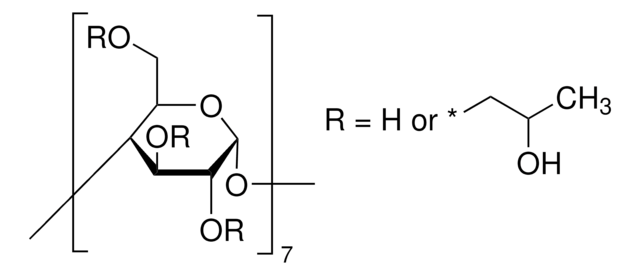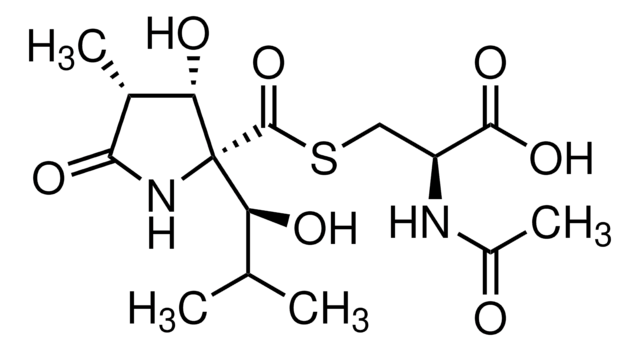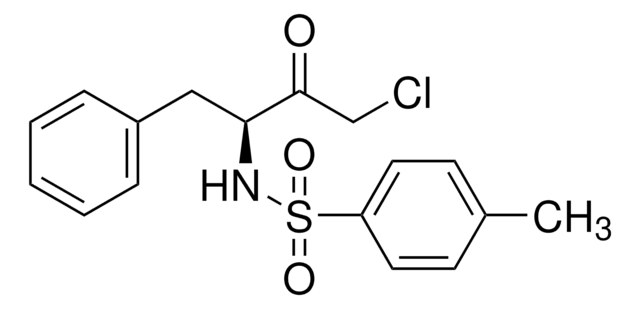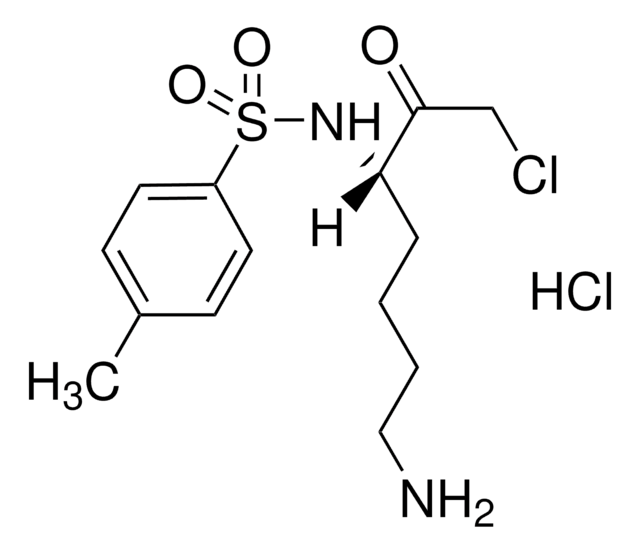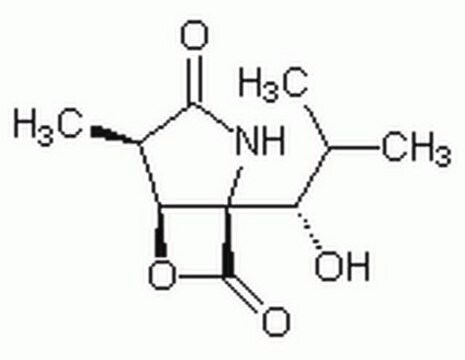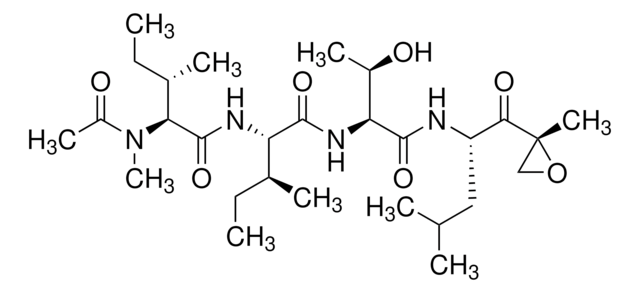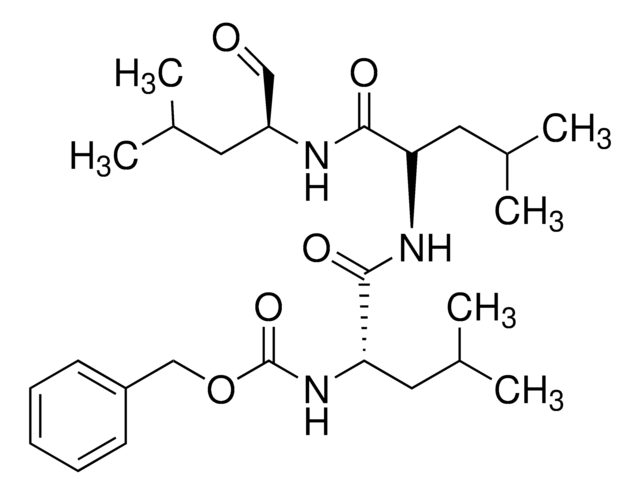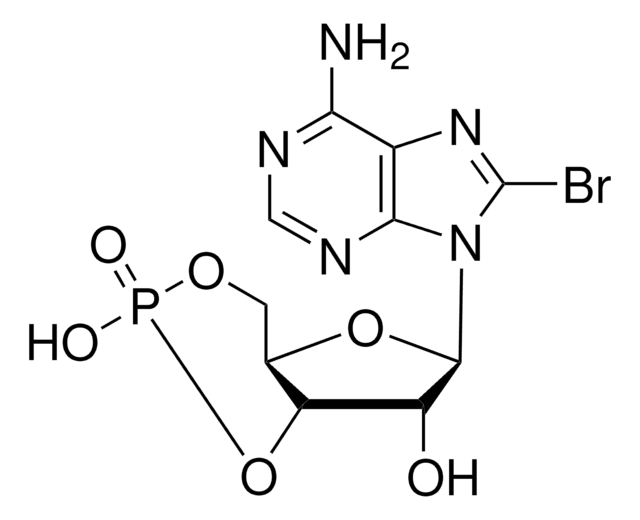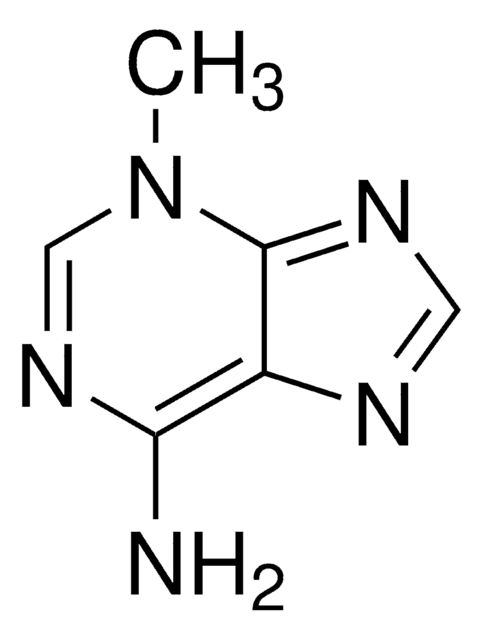L7035
clasto-Lactacystin β-lactone
Sinonimo/i:
(1R,4R,5S)-1-[(1S)-1-Hydroxy-2-Methylpropyl]-4-Methyl-6-Oxa-2-Azabicyclo[3.2.0]Heptane-3,7-Dione, Omuralide
Autenticatiper visualizzare i prezzi riservati alla tua organizzazione & contrattuali
About This Item
Formula empirica (notazione di Hill):
C10H15NO4
Numero CAS:
Peso molecolare:
213.23
Numero MDL:
Codice UNSPSC:
12352200
ID PubChem:
NACRES:
NA.77
Prodotti consigliati
Saggio
≥95% (HPLC)
Livello qualitativo
Stato
film
Solubilità
DMSO: soluble 25 mg/mL
Temperatura di conservazione
−20°C
Stringa SMILE
[H][C@@]12OC(=O)[C@@]1(NC(=O)[C@@H]2C)[C@@H](O)C(C)C
InChI
1S/C10H15NO4/c1-4(2)6(12)10-7(15-9(10)14)5(3)8(13)11-10/h4-7,12H,1-3H3,(H,11,13)/t5-,6+,7+,10-/m1/s1
FWPWHHUJACGNMZ-NBBQQVJHSA-N
Applicazioni
Clasto-Lactacystin β-lactone has been used as a proteasomal inhibitor.
Clasto-Lactacystin β-lactone has been used as a protein degradation inhibitor to test its effect on memory improvements in mice. It has also been used as a proteasome inhibitor in human ovarian surface epithelium (HOSE) cells and dendritic cells (DCs).
Azioni biochim/fisiol
Cell-permeable and irreversible proteasome inhibitor. Lactacystin acts as a precursor for clasto-lactacystin β-lactone.
Clasto-Lactacystin β-lactone (cLβL) is synthesized from lactacystin. It is cell-permeable and cLβL acts on the N-terminal threonine of subunit proteasome β -subunit X It also inhibits 20S proteasome activity in Haloferax volcanii by acting in the N-threonine residue of the β -type subunits.
Avvertenze
Warning
Indicazioni di pericolo
Consigli di prudenza
Classi di pericolo
Eye Irrit. 2
Codice della classe di stoccaggio
11 - Combustible Solids
Classe di pericolosità dell'acqua (WGK)
WGK 2
Punto d’infiammabilità (°F)
Not applicable
Punto d’infiammabilità (°C)
Not applicable
Scegli una delle versioni più recenti:
Possiedi già questo prodotto?
I documenti relativi ai prodotti acquistati recentemente sono disponibili nell’Archivio dei documenti.
I clienti hanno visto anche
Florian Vogel et al.
Traffic (Copenhagen, Denmark), 8(9), 1205-1214 (2007-07-17)
Intracellular trafficking of viral movement proteins (MPs) in plants has mainly been studied using Tobacco mosaic virus MP30 (TMV MP30) as a model system. Because of the limitations of TMV MP30 expression in Arabidopsis thaliana, these studies have mostly been
Kristen Willeumier et al.
The Journal of neuroscience : the official journal of the Society for Neuroscience, 26(44), 11333-11341 (2006-11-03)
The ubiquitin proteasome system, generally known for its function in protein degradation, also appears to play an important role in regulating membrane trafficking. A role for the proteasome in regulating presynaptic release and vesicle trafficking has been proposed for invertebrates
Coordinated regulation of dendrite arborization by epigenetic factors CDYL and EZH2
Qi C, et al.
The Journal of Neuroscience, 34(13), 4494-4508 (2014)
A Craiu et al.
The Journal of biological chemistry, 272(20), 13437-13445 (1997-05-16)
The antibiotic lactacystin was reported to covalently modify beta-subunit X of the mammalian 20 S proteasome and inhibit several of its peptidase activities. However, we demonstrate that [3H]lactacystin treatment modifies all the proteasome's catalytic beta-subunits. Lactacystin and its more potent
A K Ho et al.
Endocrinology, 148(2), 743-751 (2006-11-04)
In this study, we investigated the role of two inducible repressor proteins, inducible cAMP early repressor (ICER) and Fos-related antigen 2 (Fra-2) in the adrenergic induction of MAPK phosphatase-1 (MKP-1) as compared with their roles in the induction of arylalkylamine-N-acetyltransferase
Il team dei nostri ricercatori vanta grande esperienza in tutte le aree della ricerca quali Life Science, scienza dei materiali, sintesi chimica, cromatografia, discipline analitiche, ecc..
Contatta l'Assistenza Tecnica.